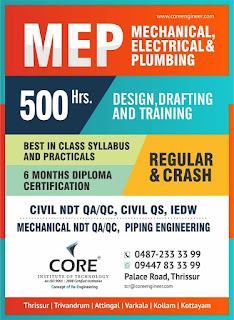High tensile strength.
There are two primary reasons to
use steel conduit. According to the Steel Tube Institute of North
America, steel conduit is the best possible protection of your
electrical conductor and wiring systems, and it facilitates the
insertion and extraction of conductors and wiring. Steel conduit is used
in more than 50% of U.S. manufacturing and other industrial facilities
in a variety of indoor, outdoor, and underground applications, including
those where corrosive and hazardous conditions exist.
RMC, IMC, and EMT are permitted
as an equipment grounding conductor in accordance with NEC 250.118. A
supplementary equipment grounding conductor sized in accordance with NEC
250.122 may be added as well. If a supplementary equipment grounding
conductor is used, it is still important to comply with NEC 300.10 and
300.12, since approximately 90-95% of the ground current flows on the
conduit and not in a supplementary conductor.
Environmental considerations for conduit
The coefficient of expansion for steel
conduit/EMT is 6.5x10-6in./in./deg F. This is significant as it relates
to whether or not expansion fittings would be required in a particular
application. Expansion fittings are installed where significant
temperature differentials are anticipated. These temperature shifts
cause materials to expand and contract and could result in the conduit
being pulled apart at the joints. Expansion fittings are not normally
required with steel conduit/tubing because their coefficient of
expansion is similar to that of other common building materials.
However, when steel conduit is installed on bridges, rooftops, or as an
outdoor raceway span between buildings, expansion fittings may be
required. In these types of installations, there is a probability that
expansion and contraction would occur, resulting from the direct heat of
the sun coupled with significant temperature drops at night.
Couplings that accommodate thermal expansion
while maintaining grounding and bonding integrity are now available.
Such a coupling uses an internal bonding jumper to maintain electrical
continuity (Fig. 3). An internal, keyed, sliding bushing allows conduit
movement. Installation is simple, requiring no disassembly. These
couplings are installed by sliding the fitting onto the moving conduit
until it stops at the internal slide bushing, then tightening. The next
step is to tighten the gland nut with a wrench to compress the packing,
creating a weather-resistant seal around the moving conduit. The final
step is to thread the next length of conduit (stationary) into the other
end of the fitting.
PLANT ENGINEERING magazine extends its
appreciation to Cablofil, Inc., Cable Tray Institute, Square D/Schneider
Electric, Steel Tube Institute of North America, and Thomas & Betts
Corp. for the use of their materials in the preparation of this
article.
Cable tray selection checklist
When selecting cable trays, cable tray configurations, and support methods, seek the answers to the following questions:
Where will the cable trays be used?
Job site and installation considerations include:
Indoor
Support locations available affect the length and strength of the system.
Industrial installations may require a 200 lb concentrated load.
Office installation may make system appearance, system weight, and space available important factors.
Environmental air handling areas may affect
cable types, cable tray material, or cable tray type, as well as the
potential need for covers.
Classified hazardous locations affect the acceptable cable types.
Outdoor
Available supports affect length and strength requirements.
Environmental requirements include loads, ice, wind, snow, and possibly seismic situations.
Corrosion requirements affect materials and finishes.
Classified hazardous locations affect acceptable cable types.
What types of cables will be supported, and how many?
NEC cable fill requirements dictate size, width, and depth of cable tray.
Cable support requirement may necessitate bottom type.
Largest bending radius of cable controls fitting radius.
Total cable weight determines load to support.
What are the future requirements of your system?
Cable entry/exit freedom may change.
Designing a partially full or an expandable system may produce big savings later.
Support type should allow for expansion needs.
Conduit installation tip
• Conduit having factory-cut threads are supplied with corrosion protection applied.
• Field cut threads are required to be coated
"with an approved electrically conductive, corrosion-resistant compound
where corrosion protection is necessary," according to NEC 2002 300.6
(A). Field-cut threads should be protected from corrosion if they will
be installed in wet or outdoor locations. Protect the thread surface
with conductive rust resistant coating such as zinc-rich paint. Other
conductive coatings are appropriate as well.
• Field threads should be cut one thread short.
This ensures a good connection and allows the entire thread surface to
be inside the coupling.
 The process which involves the introduction of tiny air bubbles into concrete is called air entrainment. And the concrete formed through this process is called air entrained concrete. Using air entraining Portland cement or air entraining agents such as admixture, air entrainment is done in concrete. The amount of air in such concrete is usually between four to seven percent of the volume of concrete. It is measured by galvanometric method, volumetric method and pressure method. The air bubbles relieve internal pressure on the concrete by providing chambers for water to expand when it freezes.
The process which involves the introduction of tiny air bubbles into concrete is called air entrainment. And the concrete formed through this process is called air entrained concrete. Using air entraining Portland cement or air entraining agents such as admixture, air entrainment is done in concrete. The amount of air in such concrete is usually between four to seven percent of the volume of concrete. It is measured by galvanometric method, volumetric method and pressure method. The air bubbles relieve internal pressure on the concrete by providing chambers for water to expand when it freezes.

























